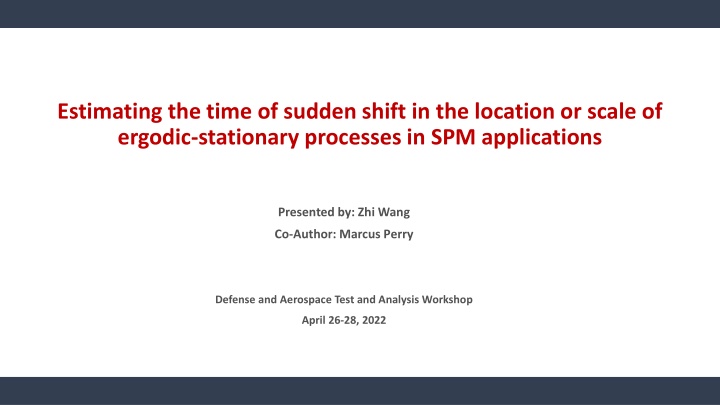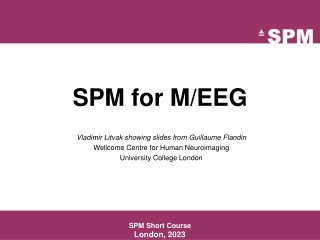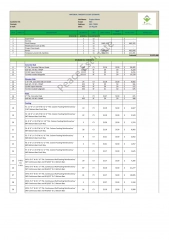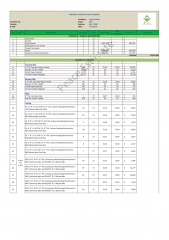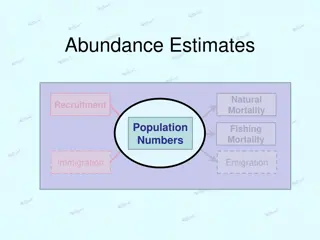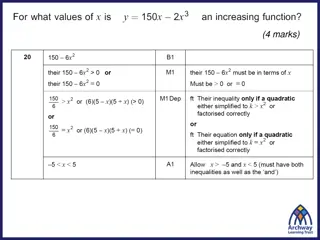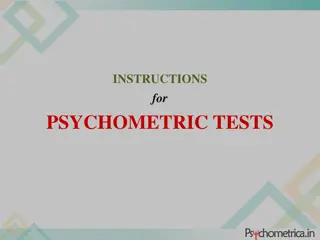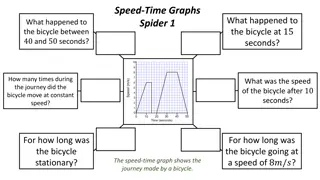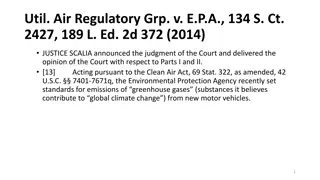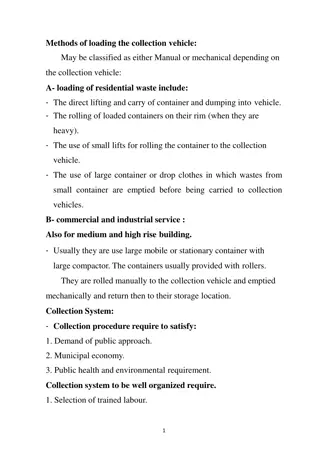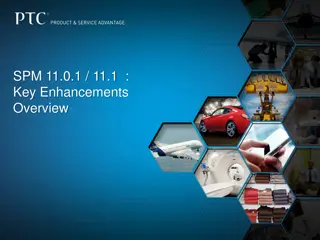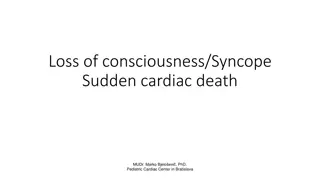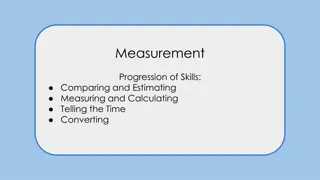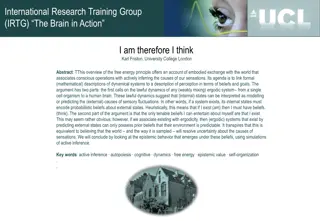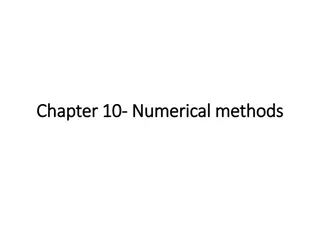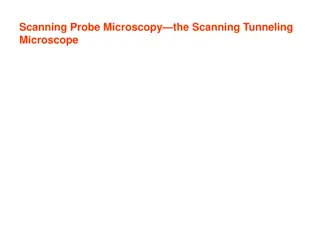Estimating Time of Sudden Shift in Ergodic-Stationary Processes for SPM Applications
Industrial processes now require advanced data analysis techniques due to high-rate data sampling and non-normal distributions. Existing change point estimation methods have limitations, especially with autocorrelation. This study focuses on estimating the time of sudden shifts in ergodic-stationary processes accurately, enabling efficient identification of special causes in process control charts.
Download Presentation

Please find below an Image/Link to download the presentation.
The content on the website is provided AS IS for your information and personal use only. It may not be sold, licensed, or shared on other websites without obtaining consent from the author.If you encounter any issues during the download, it is possible that the publisher has removed the file from their server.
You are allowed to download the files provided on this website for personal or commercial use, subject to the condition that they are used lawfully. All files are the property of their respective owners.
The content on the website is provided AS IS for your information and personal use only. It may not be sold, licensed, or shared on other websites without obtaining consent from the author.
E N D
Presentation Transcript
Estimating the time of sudden shift in the location or scale of ergodic-stationary processes in SPM applications Presented by: Zhi Wang Co-Author: Marcus Perry Defense and Aerospace Test and Analysis Workshop April 26-28, 2022
Introduction and Motivation Introduction and Motivation Modern industrial process Requirements: Advances in data acquisition and storage technology have permitted data to be sampled at a high rate, often inducing autocorrelation into the observed data sequences. In addition, today s processes rarely follow the Normal distribution, making the use of traditional estimators that has unrealistic assumptions questionable Limitations of the change point estimation strategies in the literature: The lack of a suitable change point estimation method in the case of autocorrelation is an important gap in the statistical process control (SPC) literature. For example, the popular maximum likelihood change point estimator for the time of step change in the mean of a normal process developed by Pignatiello and Samuel fails to consider the autocorrelation; Although Perry and Pignatiello extended this estimator to consider covariance-stationary autocorrelated process, it is still restricted by the normality assumption. As a result, today s process stimulate the need for distribution-free strategies that consider autocorrelation Focus: Estimating the time of step change in the location and/or scale of ergodic-stationary sequences following a genuine signal from a SPC chart. In which, a sequence ?1,?2, is ergodic-stationary if ? ? = ??? ??,?t ? depends on ? and ? ? = 0 as ? . Obtaining an accurate and reliable estimate of the process change point would permit a simplified search for and identification of the special cause in post control-chart signal diagnostic Zhi Wang Defense and Aerospace Test and Analysis Workshop April 27, 2022 2/10
Introduction and Motivation A distribution-free joint monitoring scheme for location and scale using individual observations: Define a median clipped binary sequence ??and an interquartile clipped binary sequence ???? of the continuous data sequence (?)= 1,?? ??> ?2 0,?? ?????? and ?? (???)= 1,?? ?? [?1,?3] 0,?? ?????? ?? is generated for each ? = 1,2, , where ?? . We then model the joint mass function for the clipped binary sequences using the Bahadur approximation proposed by Bahadur (1961). As a result, we proposed a CUSUM strategy for monitoring the mean of ergodic-stationary binary sequences. Our CUSUM charting statistic was derived from the sequential probability ratio test (SPRT) for testing the simple hypotheses ?0:??= ?0 versus ?1:??= ? (? = 1, ,?), where ?0 ? . first- order dependence structure For ? = 1,2, and ?0= 0 , the charting statistics: ?? is the observed value of the binary sequence at time ? second-order dependence structures: ? s denoting the autocorrelation coefficients and Next, we consider estimating the time of sudden shift in the mean of an ergodic- stationary binary sequence following a genuine signal from this CUSUM control chart Zhi Wang Defense and Aerospace Test and Analysis Workshop April 27, 2022 3/10
Methodology Methodology Consider the binary sequence ? = ?1,?2, ,??, where ? ?? = ?? for ? = 1, ,?. Denote ? an unknown change point such that ??= ?0 for ? = 1,2, ,? and ??= ?1 for ? = ? + 1, ,?, where ?0 ?1. Assume the in-control mean ?0 is known and the shifted mean ?1 is unknown. Given an observed ? = ? following a control chart signal, the objective is to estimate the unknown change point ? Built-in change point estimator of the CUSUM control chart suggested by Page: The CUSUM change point estimate is given by the most recent time index yielding a cumulative sum of zero, that is ??????= max{?:??= 0} Example: Single realization of a CUSUM sequence with the alarm threshold set to h=4. Control chart signaled at sample 114. The built-in CUSUM change point estimator yields ??????= 98, which is the most recent time index yielding a cumulative sum of zero Maximum likelihood estimator (MLE) for the process change point: Using the MLE in place of the built-in CUSUM change point estimator allows the user to construct an approximate confidence set on the unknown change point ?, which is more useful than point estimates in practice as they provide additional information about the variability in the point estimate Zhi Wang Defense and Aerospace Test and Analysis Workshop April 27, 2022 4/10
Methodology ? ? Let ? ?= ? 1 ?=1 ?? and ??,?= (? ?) ?=?+1 ??: First-order dependence: the log-likelihood function can be written explicitly as (0)= (?? ?0)/ ?0(1 ?0) and ?? (0)= (?? ?1)/ ?1(1 ?1). Since ?1 is unknown, it must be estimated from the data. However, where ?? unless ? = 0, there is no closed-form solution for ?1. Fortunately, given today s computing capability, we can apply widely accessible optimization routines to numerically solve for ?1 at each ? = ? [0,1, ,? 1]. Denote the MLE of ?1 at any given ? by ?1? . Then replacing ?1 with ?1? in above log-likelihood function and evaluating over all possible change points ? = 0,1, ,? 1 leads to the MLE for ?. That is, One can easily extend the MLE for t to consider a higher-order dependence. We consider only the first-order dependence case in our following study, although higher-order dependence cases could be applied similarly Zhi Wang Defense and Aerospace Test and Analysis Workshop April 27, 2022 5/10
Performance and Recommendation Performance and Recommendation Use Monte Carlo simulation to compare relative performances between the CUSUM, proposed and Perry and Pignatiello change point estimators for location (scale) shifts and following a genuine signal from the median-clipped (IQR-clipped) CUSUM chart of Perry and Wang. Specifically, We considered the CUSUM control chart to monitor the clipped sequence and designed the CUSUM chart for a 50% increase in the mean, i.e., 0 = 0.5 and ?* = 0.75 We consider the continuous AR(1) model in our simulation, i.e., ??= ? + ?? 1+ ??, where < 1, and generate the median- and IQR-clipped sequences from this process. To assess the robustness of any given method across different white noise error distribution, we consider generating ? in the AR(1) model from the Pearson family of distribution Estimate quartiles Median-clipped sequences IQR-clipped sequences Simulate a continuous in-control AR(1) Length: M Parameter: ??? error term: Pearson distribution with zero mean, unit variance and skewness parameter ? In-control level parameter ? = ?0= 0 Kurtosis of Pearson error distribution = ?2+ 3, when ? = 0, we have the standard normal distribution Estimate the process change point using the proposed and alternative methods Estimate correlation parameters in Bahadur model Autoregressive parameter and level parameter ?0 for the Perry and Pignatiello estimator Genuine signal obtained Monitoring began Change simulated M + 1 M M + ? + 1 M + T In-control process Out-of-control-process Zhi Wang Defense and Aerospace Test and Analysis Workshop April 27, 2022 6/10
Performance and Recommendation Empirical CDFs (ECDFs) of the CUSUM, proposed, and Perry and Pignatiello change point estimators following a genuine signal from the median-clipped CUSUM control chart of Perry and Wang. The CUSUM and proposed estimators were applied to the median-clipped sequence, while the Perry and Pignatiello estimator was applied to the continuous sequence, i.e., AR(1) with = 0.25. ECDFs based on 10,000 independent simulation runs. ? is the magnitude of location shift in standard deviation units. ? = 10,000 and ? = 50. Zhi Wang Defense and Aerospace Test and Analysis Workshop April 27, 2022 7/10
Illustrative Example Illustrative Example Demonstrate our new change point estimator on the selective laser melting (SLM) process discussed in Colosimo and Grasso. o Problem: hotspot occurrences in a laser powder bed fusion (LPBF) process o Data: Monitoring data are collected by video capture of the process, where any given video can be broken down into a time series of frames. Rate of capture: 32 frames per second Each frame consists of a 71121 matrix of Figure shows the triangle shape being manufactured for this example, with the three corners identified by X, Y, and Z. Note that Figure 7a reports the pixels considered within each frame (or matrix), while Figure 7b identifies the laser melting tool along with the hotspot that occurred at pixel Z. Figure plots the time series extracted from each of the three pixels Zhi Wang Defense and Aerospace Test and Analysis Workshop April 27, 2022 8/10
Illustrative Example The CUSUMs were designed for a 50% increase/decrease in the mean of the clipped process The alarm threshold for each chart was set so that the joint monitoring scheme yielded an in-control ARL of approximately 1000 Both CUSUM charts were designed under a first-order Bahadur approximation to the clipped sequences Notice that the median-clipped CUSUM for increases produced a signal at frame 114, while the IQR-clipped CUSUM produced a signal at frame 133 Figure shows the median- and IQR-clipped CUSUM charts applied to pixel Z, for both the increasing and decreasing cases. Zhi Wang Defense and Aerospace Test and Analysis Workshop April 27, 2022 9/10
Illustrative Example Figure shows Change point estimates using (a) CUSUM estimator and (b) proposed estimator. Horizontal lines in log- likelihood vs potential change point plots in (b) represent the 95% critical value for the confidence set, i.e., all t that yield log- likelihood values above the horizontal line are included in the 95% confidence set. Box and Cox [3] suggested constructing confidence sets on parameter estimates using the likelihood function. Applying such a method yields an approximate 100 1 ? % confidence set of the form Given that the true process change occurred around frame 100: The CUSUM approach estimated an increase in process location following frame 84 and a decrease in process scale following frame 99 The cardinality of the confidence set for a location shift is 14, while set cardinality for a scale shift is 6, suggesting greater variability in the estimate for the time of location shift. The proposed approach estimated a location increase following frame 94, and a scale decrease following frame 99 Zhi Wang Defense and Aerospace Test and Analysis Workshop April 27, 2022 10/10
